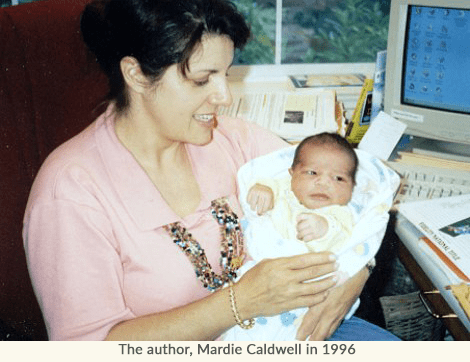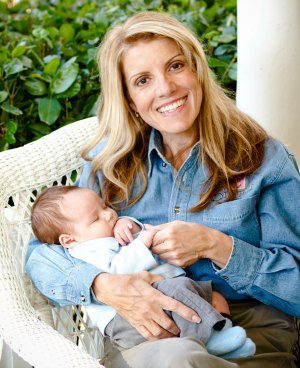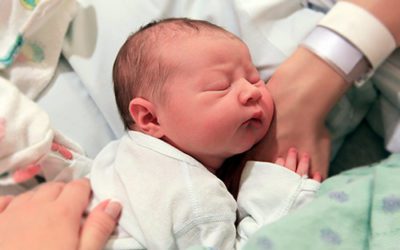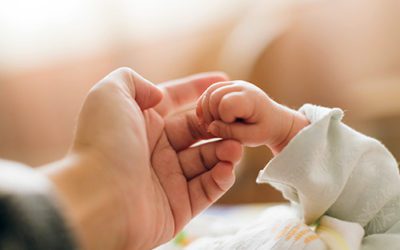
It’s my honor to share how adoptions in the U.S. have changed over the years. November is a time to honor all the complexities that come with adoption, and today, we’re taking a look back at how this celebration, cause to raise awareness, and advocacy for more education on adoption came to be. Join me as I reveal a peek into the past of how adoption has evolved from a secretive practice to a nationally recognized and celebrated event!
National Adoption Month
If you’re on social media, you’ve probably seen the hashtags #NAAM, #NAAM23, and #NAAM2023, and had the opportunity to see everyone in the adoption triad sharing their stories. But how did we get here?
It all began in 1976 when Massachusetts Governor Mike Dukakis initiated Adoption Week to spread awareness of the need for adoptive parents for children in the foster care system. As the idea spread, President Gerald Ford made the first Adoption Week proclamation. Then in 1984, President Ronald Reagan announced the creation of a National Adoption Week, to happen the week prior to Thanksgiving. An adoptive father himself, Reagan said in his proclamation how he recognized both the children within the foster care system and also those born from crisis pregnancies. He described birth mothers as being brave and selfless in their decision to choose adoption. Reagan also promoted the adoption of special needs children in the US and overseas. At the time, special needs adoption wasn’t usually acknowledged or encouraged by the public.
Noticing that so many states were embracing Adoption Week, President Bill Clinton extended the week to the entire month of November. He spread the word about initiatives his government created to break down barriers to transracial adoption while also encouraging special needs adoption and adoption from foster care. In 1998, Clinton supported using the Internet to help find homes for children in foster care. President George W. Bush was the first president to issue a proclamation about National Adoption Month in Spanish in 2008.
Looking Back – Closed Adoption
Adoptions have changed drastically within the past 50 years. Traditionally, all adoptions were closed. That meant that there was no interaction between the birth mother and the adoptive parents. No identifying information was provided either to the birth families or adoptive families, so the child didn’t know his or her birth parents and wasn’t able to get in touch with them. As the child grew up, he or she often struggled with personal identity because of the absence of contact with their birth family.
Years ago, Ilene told me how she came to adopt her two children in the early 1940s. They received a phone call one evening from a local adoption agency asking them if they still wanted to adopt. If so, there were two children, both infants, available. Ilene told the social worker she’d speak to her husband at dinner. If he agreed they would “come down after they finished dinner and cleaned up the kitchen,” to pick up the children. In that era, adoptions happened in a completely different style from the modern adoptions of today.
Adoption Evolves
Many changes have made adopting a child somewhat different today. Opinions and attitudes of adoption have changed. Negative experiences with closed adoption forced the process to open up. Agencies and their policies evolved slowly. Regardless of changes, some agencies today still have in place procedures used 30 years ago. Many of these are failing because they are not meeting the needs of their clients. Successful agencies will continue to operate as long as compassionate and caring social workers are involved. In the late ’70s, adoption facilitators and attorneys began to offer services to meet needs not being met by all agencies.

Whatever the circumstances were, adopted children are now allowed to have that knowledge to do with it whatever they need to feel complete. Some adoptees accepted the information and left it at that, others felt they needed more details and wanted to search for their birth parents for more answers, while another group wasn’t interested in knowing any more than they had received growing up.
With a closed adoption, the child often doesn’t have the option of knowing their birth parents. Information about their adoption, their birth family, and their origins are unavailable to them. Experts agree offering flexibility in adoption to meet the needs of the triad is the most successful way to approach adoption today. The adoptive parents are provided the knowledge of their child’s medical history, which helps should anything go wrong.
Closed adoptions will continue, though the percentage is less than a single digit today. There will always be birth parents and adoptive families who feel it’s best for their situation. Time will tell if it truly was. For now, the benefits of an open adoption far outweigh any other option. Education helps adoptive parents to become more familiar with the benefits to their child, themselves, and the birth parents.
Hoping to Adopt? Learn About Open Adoption
If you’re hoping to adopt, I encourage you to seek support from others who have an open adoption with their child’s birth parents. Most adoptions nowadays are classified as an “open adoption,” which means that the birth mother chooses the adoptive family for her child. It also involves some type of contact between the adoptive family and the birth family in the future. Some adoptive families stay in touch with their child’s birth mother through email and Facebook only, while others have visits once or twice a year.
Open adoption is known to be beneficial for all in the adoption triad (adoptive couple, adopted child, and birth mother). For the adoptive family, it gives you access to birth family members who can answer background and medical history questions that you may not be able to. For the child, open adoption provides a sense of connection and completeness. And for the birth mother, she can have comfort in the knowledge that her child is growing up safe, healthy, and loved.
So this National Adoption Awareness Month, make it your goal to learn more about open adoption today and how it works. Especially if you’re hoping to adopt a baby or child, gaining knowledge about open adoption before you adopt is essential. Each adoptive family’s adoption story is unique, and they all have their own circumstances. Since no one type of adoption arrangement will be right for everyone, it’s important that you consider what is best for your family both now and in the future.
Editor’s Note: This article was originally published on November 6, 2019, and has since been updated.
Founder of Lifetime Adoption, adoptive mom, adoption expert, and Certified Open Adoption Practitioner (C.O.A.P).
Since 1986, adoption expert Mardie Caldwell has been dedicated to bringing couples and birth parents together in order to fulfill their dreams.
“Many years ago, I was also searching for a child to adopt. We didn’t know where or how to get started. Through research, determination, and a prayer, our dream of a family became reality. I started with a plan, a notebook, assistance from a caring adoption consultant and a lot of hard work; this was my family I was building. We had a few heartaches along the way, but the pain of not having children was worse!
Within weeks we had three different birth mothers choose us. We were overwhelmed and delighted. Many unsettling events would take place before our adoption would be finalized, many months later. Little did I know that God was training and aligning me for the adoption work I now do today. It is my goal to share with our families the methods and plans which succeed and do not succeed. I believe adoption should be affordable and can be a wonderful “pregnancy” for the adoptive couple.
I have also been on both sides of infertility with the loss of seven pregnancies and then conceiving by new technology, giving birth to a healthy daughter. I have experienced first-hand the emotional pain of infertility and believe my experience allows me to serve your needs better.
It is my hope that for you, the prospective parents, your desire for a child will be fulfilled soon.”




0 Comments